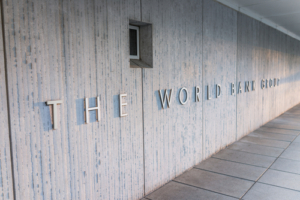The Intricacies of U.S. Financial Support to Ukraine: A Deep Dive

In recent developments, the U.S. Treasury Department has fast-tracked a substantial $20 billion aid package to Ukraine, merging with the G7’s ambitious Extraordinary Revenue Acceleration (ERA) Loans initiative, which totals a staggering $50 billion. At Extreme Investor Network, we dig into the implications of these financial maneuvers, exploring not only the immediate impact but also their broader economic consequences for global markets and the geopolitical landscape.
The Strategy Behind the Speed
The quick dissemination of these funds seems driven by a sense of urgency—particularly a concern that a potential shift in U.S. political leadership could lead to changes in aid policy. The current administration is keen to implement this financial assistance without delay, navigating around historical obligations and the complexities of Congressional approval. Notably, these funds are sourced from frozen Russian assets, raising questions about the ethical implications and long-term ramifications of repurposing these assets for aid.
What Will the Funds Accomplish?
While the Treasury’s Secretary Janet L. Yellen emphasizes that these funds will empower Ukraine’s defense against external aggression, it’s pertinent to question where the money is truly headed. Yellen stated, “These funds… will provide Ukraine a critical infusion of support…” but the specifics regarding their allocation remain murky. Are these funds primarily for military aid, or will they genuinely support humanitarian needs such as hospitals and emergency services? As we explore this labyrinth of funding, it’s clear that transparency is essential yet absent.
The Role of the World Bank
This $20 billion will be transferred to the World Bank’s Facilitation of Resources to Invest in Strengthening Ukraine Financial Intermediary Fund. The World Bank has often been scrutinized for its allocation of funds, particularly around issues that matter profoundly—for instance, the unaccounted $41 billion earmarked for combating climate change. Amid critiques of financial opacity and alleged corruption, one must question whether new financial structures will lead to effective change or simply serve as vehicles for continued mismanagement.
An Economic Warfare Paradigm
The origins of this funding, originating from Russian assets, signal a form of economic warfare, altering the conventional perceptions of how nations engage in conflict. While the current administration frames this as a fight against a "belligerent regime," it’s essential to analyze the broader implications. The U.S. government’s financial strategy is not just about supporting Ukraine; it reflects a narrative woven into global geopolitics, raising questions about economic sovereignty and the power dynamics that govern global assistance.
Conclusion: The Bigger Picture
As we at Extreme Investor Network examine these developments, we encourage readers to think critically about the interplay between international finance and political motives. The continuous flow of funds amid a complex geopolitical scenario serves to illustrate a broader truth: in the world of economic support, transparency, accountability, and strategic foresight become paramount.
As these events unfold, we urge our readers to stay informed and engaged. Understanding these intricate dynamics is essential, not just for comprehending the current state of international relations, but also for grasping the economic undercurrents that might shape our future. Are we witnessing a genuine act of support or merely the continuation of a fabricated narrative? Join our community and keep the conversation going – the stakes have never been higher.

